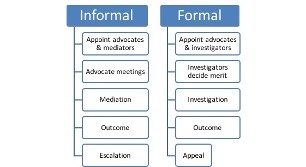Published: 17 May 2022

St George’s recently launched a new online reporting tool for incidents of bullying, harassment and discrimination that take place within the University whether on campus, in halls of residence or on placement.
Students can use the confidential tool to report incidents of physical or verbal assault, sexual harassment or violence, online harassment, stalking, bullying, discrimination or a hate crime that they have experienced or witnessed.
We spoke to Attai Inuenekpo, Students Equality Diversity and Inclusion Officer who has been leading on the development of the new tool.
Why was the new tool developed?
We had received questions from students about how to report bullying and harassment, and it became apparent that the existing process was hard for students to navigate. As a result, not everyone who needs help may be coming forward, and that is something we wanted to address. We know that it can be challenging for students to raise a concern or make a complaint – sometimes due to the fear of repercussions. So this tool is another channel for them to do so confidentially.
We also want to get a clearer picture of what is happening at St George’s and collect more robust data, so that we can see whether our policies are working, or if there is more we could be doing. We want the data to support our commitments to diversity and creating a positive learning environment. For that we need to have the right structures in place and create some robust data baselines.
We have a comprehensive Dignity at Study policy and the new reporting tool supports this in our efforts to create a community where everyone is treated with dignity and respect.
Tell us about the new tool
The new tool is available here.
We have developed a two part approach which we call ‘Report and Support’, so that students can report an incident and then get the welfare support they may need – this support may be in-house or signposting to external agencies. For reporting, we wanted a student-friendly tool which was easy to access, and help them understand the process which follows. We don’t want students to be deterred from reporting incidents because the process is too complicated.
We also want to give clear guidelines about the process so they know how their report will be handled at each stage. When they use the reporting tool, the information will be sent to the Student Services Team, who will aim to respond within one working day. Students will then be able to meet with trained staff to discuss incidents, who will also establish any immediate welfare needs the student may have.
Staff will work with the student to triage the report either into a formal or informal process. We’ve developed a flow chart, which explains our approach.

We’ll use advocates and mediators, who will be given training in safeguarding, and about discrimination and protected characteristics. Advocates will explain the policy and procedures and they will also signpost the welfare support which is available. To begin with, advocates will be members of senior staff, but in future we would like to see students involved in advocacy, as paid roles. Having students as advocates may encourage more students to come forward to talk to someone who they can easily relate to.
If a formal investigation is required, we will draw investigators from a pool of senior staff, and staff from HR and Student Compliance and Complaints.
What role can the St George’s community play?
Another important element of our work is allyship – raising awareness within the university community about what constitutes bullying and harassment and what students can do if they see others experience it. Incidents may not happen to them directly, but they may be present when others do. Knowing what constitutes bullying and harassment, and supporting those who suffer it, is an important part of creating a more positive learning environment for everyone.
Leadership commitment is also important, so that everyone in the St George’s community can see that it is taken seriously at the highest levels. In that respect, we are grateful to have the support of the University’s senior leadership team and Council, who have endorsed our plans.
Our hope is that working together with staff and students, the combination of our policies and the reporting tool will help create a truly diverse learning environment that supports all students to achieve their full potential.
To learn more about the process and how to use the tool, visit the reporting webpage.